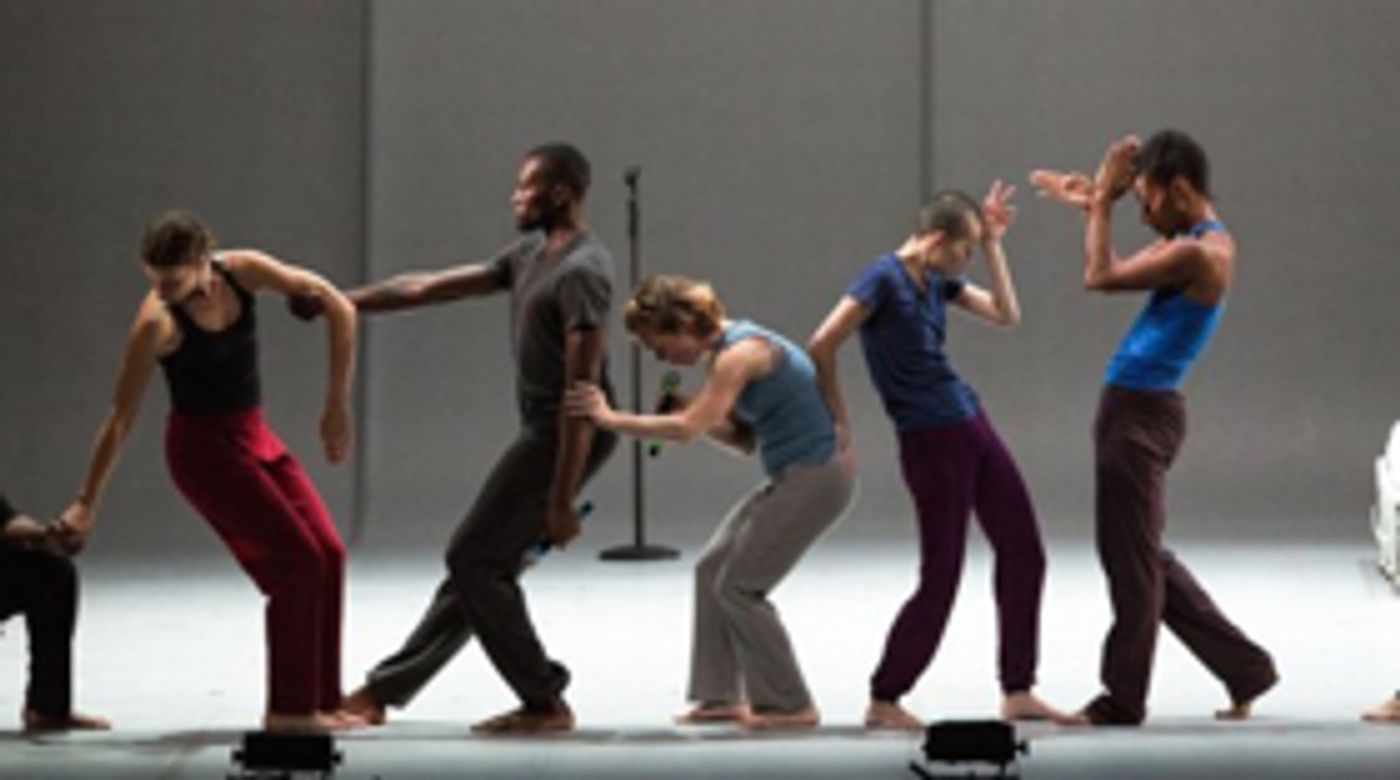BWW Dance Review: Bill T. Jones Analogy Trilogy

The lights go out, the curtain goes up. An empty space. Dancers enter with large cutout sheets, which they maneuver into images. A house? A patio? An office? A forest? It's all of them, and herewith begins the prologue to this adventure, the Bill Jones Analogy Trilogy, three one act dance pieces presented at NYU's Skirball Center for the Performing Arts on September 23, 2018, a marathon that lasted from 3 pm - 9 pm, with a 45 minute intermission and an hour dinner break.
How did I feel about it?
That's a bit tricky, because there isn't a wholly satisfactory answer that I can give.
The Analogy Trilogy, conceived and directed by Bill T. Jones with assistance by Janet Wong and the current and original casts, was an ambitious undertaking. While each dance had been choreographed separately in different years, it was the intention of Jones to present them all as a trilogy. Since they all deal with the meaning of dialogue, of interviewing to reach a conclusion at the point in our lives when we need answers to justify our existence, to understand our impact upon those closest to us, this seemed like a wise choice.
I began thinking during the first presentation, Dora: Tramontane, originally presented in 2015, and subsequently in each following dance. What's the idea? What am I going to take home with me to write about?
Each dance deals with a displaced person, not stateless but alone in their minds, each with memories that can't be erased, entangling their emotions and never allowing for release, except in an interview, presumably when no one was around other than the interviewer. They stand out from the crowd. They might look ordinary, yet their histories render them extraordinary.
But these are words that they speak. How do they translate into dance? Can they comment upon the action? Can the words be shaken up, tossed about by human bodies?
All three dances rely on the same take, and whereas the words can be powerful-or overly long-the choreography, or simple lack of it, intrudes. Why do these words need movement? Wouldn't they be better without dancers distracting us? Yes, some are beautiful, some quirky.
But what do they add?
According to the program note: "As much as Analogy Trilogy is concerned with form, it is also concerned with the development of an ensemble. By tasking the performers t act and sing, as well as dance, we grow through our collaborative work together. Each performer is an artist, and individual growth is collective growth. It matters what their personal relationship to the dance is, how they move, what is being said onstage, and how it is said. I can say that there's a method to the madness, but more importantly, there's an aspiration. And the aspiration gives birth to a form."
Which means, I think, that what was wanted was multi-talented performers who could dance and act, who could give voice to their bodies, and let their bodies reciprocate but adding luster to the words, explaining them, commenting on them. But I found this too trying; the dancers, a wonderfully talented group, each have a part to play in the choreography, some more than others. How do they correspond?
Dora:Tramatone is based on Jones' taped conversations with Dora Amelan in 2002. Dora was a WWII survivor, having escaped from Belgium to Vichy, the puppet and supposedly free-zone of France, where she worked at Gursand Reiversaltes, a place at the mercy of a "tramatone," a dry northerly wind.
Yet with all the dramatic overtones, the choreography, the music, I was bereft of feeling at the end. It was like watching what could have been a harrowing 30 minute stretched into a repetitive 90 minute presentation, one, that for all its earnestness-and earnestness could be the keyword of the afternoon-simply did not register on any level. Perhaps there were too many words, perhaps the dances were not choreographed for these words or just played a life of their own or, truthfully, had nothing whatsoever to do with the presentation. Even the best storytelling has to be edited.
The same holds true for the two presentations after that, Analogy/Lance: Pretty AKA the Escape Artist (2016), based on Jones' interview with Lance, also known by "Pretty", his stage name, an aspiring dancer turned drug addict, model, you name it, who, upon reminiscing discovers his life has been a total shambles, yet still retains a compelling resiliency; and Analogy/Ambros: The Emigrant (2017), an adaptation of W.G. Sebald's fictitious story of an uncle who once served as a family's butler, remaining an object of intense anonymity and seclusion.
I must give credit to the outstanding dancers. It must have been an exhausting day, yet they all acquitted themselves with heartfelt devotion: Barrington Hinds, Shane Larson, I-Ling Liu, Emily Manzo, Penda N'Diaye, Jenna Riegel, Christina Robson, Carlo Antonio Villanueva and Huiwang Zhang. To say you were all outstanding is an understatement.
Jones is an immensely talented person of the theater. But in trying to be inclusive, by seemingly trying to incorporate everything, he does himself a disservice. He's left to communicate very little, since every aspect of the dance seems to cancel the other one out.
What's next for Mr. Jones? I'm very curious.
Photo: Ben McKeown
Reader Reviews
Videos

